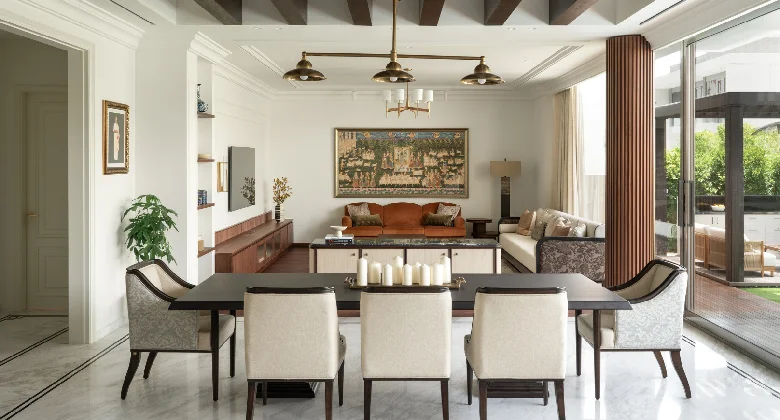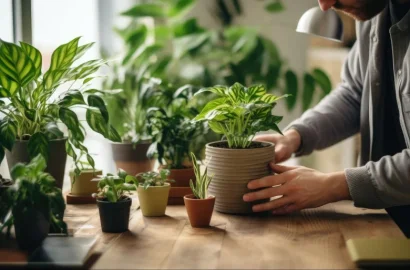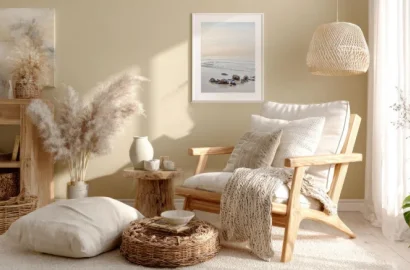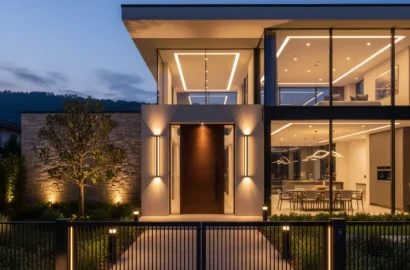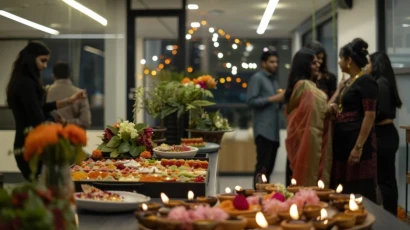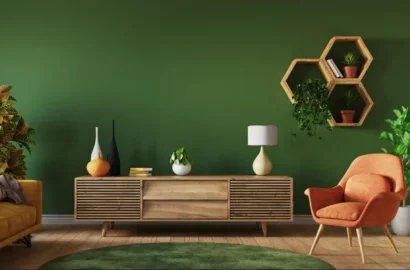Curious about Vastu Shastra? Understand what it means, learn about its principles, and find practical ideas and examples to apply in your home or next project.
Vastu Shastra is an age-old practice that creates harmony, balance, and positive energy within living spaces. Every home carries its own energy, and people living in that home naturally come under the influence of the existing energy. Therefore, it is crucial to apply Vastu principles if you want to create spaces that feel positive and radiate good vibes.
In this comprehensive guide, we will explore the relevance of Vastu Shastra and provide practical tips and inspirational examples of Vastu-compliant homes to inspire your journey as a designer.
Here’s a clickable link to everything we’ll cover in this article!
- What is Vastu Shastra? Why is it required?
- Principles of Vastu Shastra
- Actionable tips to make different parts of your home Vastu-compliant
- Things to avoid for a Vastu-compliant home
- Successful examples of Vastu-compliant homes in India
- Conclusion
What is Vastu Shastra? Why is it required?
Vastu Shastra is an ancient Indian system of architecture that is governed by a set of rules. The word “Vastu” means house, and “Shastra” means science. Its roots can be traced back to ancient Indian texts and practices. It is an ongoing practice in India that most designers implement when conceptualising their projects. Vastu Shastra provides guidelines and principles on the arrangement and design of homes and workplaces. It takes into account factors such as the location of the house, the placement of rooms and furniture, directions, colors, and materials.
The underlying belief in Vastu is that proper alignment and structure of a home can influence the flow of energy, or “prana,” within a space. This, in turn, affects the physical, mental, and emotional well-being of its inhabitants. When applied correctly, Vastu can help improve health, prosperity, relationships, and overall happiness. As modern homes become more complex, integrating these traditional principles is becoming essential for architects and homeowners when designing or renovating their homes.
Principles of Vastu Shastra
The core principles of Vastu Shastra can help you make informed decisions when designing a Vastu-compliant home. These principles focus on balancing natural elements and energies within a space, making sure that each room is positioned and designed in alignment with Vastu guidelines.
1. Orientation and direction
Each direction has its own significance. According to Vastu, the entrance of your home should ideally face the north, east, or north-east to ensure the inflow of positive energy. Homes with north-facing entrances are considered to bring career stability and financial success. Position the kitchen in the southeast, the bedroom in the southwest, and the living room in the northeast for a balanced energy flow. The positioning of rooms, doors, and windows is planned as per these directions to keep a space aligned with Vastu principles.
2. Balancing the five elements
Vastu Shastra emphasises the balance of the five natural (pancha bhootas) elements — earth, fire, water, air, and space, in every aspect of home design. Each element needs to be properly represented and balanced to ensure a seamless flow of energy within the house.
Earth (Prithvi) – Represents stability and support. The southwest is considered the zone of the earth, ideal for bedrooms and heavy furniture.
Water (Jal) – Symbolizes flow and purity. The northeast is the water zone, suitable for water features and pooja rooms.
Fire (Agni) – Denotes energy and transformation. The southeast is the fire zone, best for kitchens.
Air (Vayu) – Stands for movement and freshness. The northwest is the air zone, good for guest rooms and storage.
Space (Aakash) – Embodies expansion and openness. Central spaces should be open and clutter-free
3. Centre of the home (Brahmasthan)

Image Courtesy: Architectural Digest
The central area of the house, aka the brahmasthan, is considered the most powerful area. It should remain open, free from heavy furniture or obstructions, to allow the flow of positive energy.
4. Positive energy flow
A well-designed home encourages the natural movement of energy, or prana. This energy must flow freely through the home without any blockages. Rooms should be planned in a way that supports a continuous flow of positive energy, ensuring the well-being of everyone who lives there.
Actionable tips to make different parts of your home Vastu-compliant
Keeping in mind that major civil changes are not possible for ready-to-move-in houses, here are some practical Vastu tips to bring balance to your home.
1. The main entrance and doorway
The main entrance, particularly the doorway of a house, is considered to be the archway for growth and progress in life. It is essentially the gateway of energy into your house. The door should ideally be designed in a way that when you step out, you either face the north, east, or the north-east direction. It must be constructed with premium quality wood and should be the tallest door in the house. Ensure that it is well-lit and opens clockwise into the house. You can also add a decorative nameplate and auspicious torans outside the main entrance.
You should most definitely avoid placing any decorative water element, a shoe rack or a dustbin, or even painting the door black.
2. Prayer or meditation area
Designating a room or an area for prayer and meditation is believed to be sacred. The north-east is considered to be the favorable direction for the placement of a puja room or other spiritual pursuits. East is the next alternative. Idols or images of deities should face either east or west. It is best not to place anything above the prayer room, as it carries a negative connotation of having people walk over it.
Facing the east while meditating is also believed to increase positivity. White, beige, light yellow, or green can be great color options for a meditation room.
3. The centre of your home
Brahmasthan, or the centre of your house, is an essential aspect of ancient Indian architecture based on Vastu Shastra. This part of your house is considered to be the holiest and therefore should be clutter-free and not have any obstructions or built-up areas.
Avoid the placement of a column, kitchen, or bathroom that could potentially attract negative energy and have adverse effects on the health of family members.
4. The living room
The living room is the area where most of the activity is centred, according to Vastu. The first impression of guests, interaction with family, and social gatherings all happen here. Therefore, keep this area clutter-free and make sure it has plenty of natural light. The living room should face east, north, or northeast. If this isn’t feasible, a north-east facing living room also works.
Place seating arrangements in the south or west direction, such that people sit facing the east or north. Arrange heavy furniture in the west or south-west of the living room. Install all appliances and electronics in the south-east section. Also, if you want to place a mirror, make sure it is positioned on the north wall.
5. The bedrooms
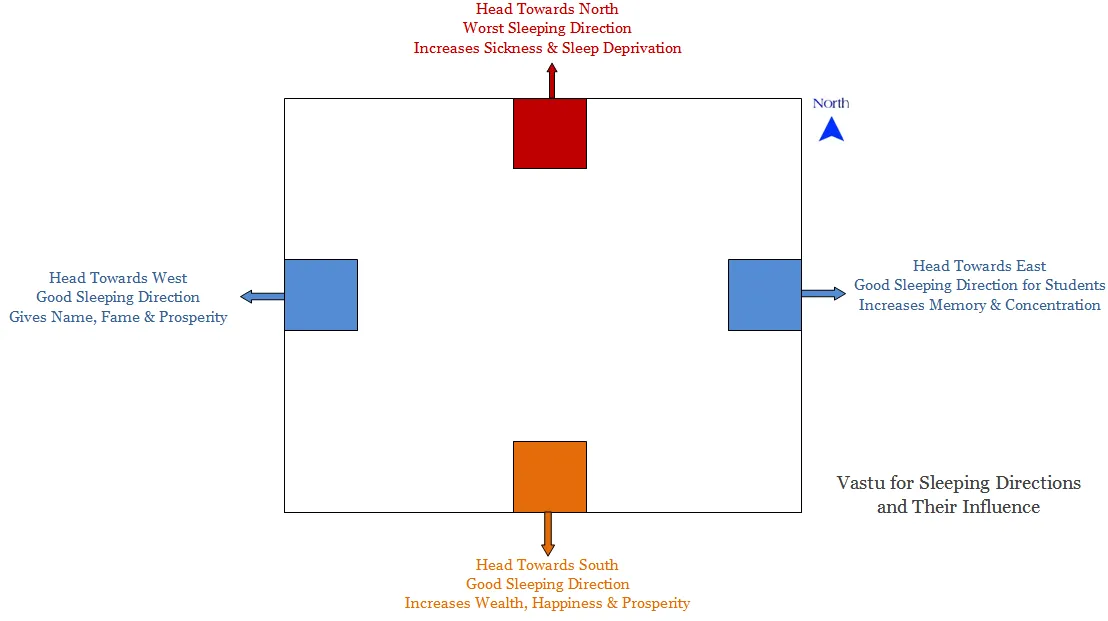
Image Courtesy: Happho
As per Vastu, it is recommended that your master bedroom be bigger than the other rooms. The ideal direction for the master bedroom is the southwest direction, which promotes good health and better relations. You can have your children’s bedroom on the west and guest bedrooms on the north or north-west. However, avoid having bedrooms in the north-east or south-east zone of the house as they may not be an excellent choice for your health. Also, keeping your head towards the north is the worst sleeping direction and should be avoided for better health.
Avoid having a mirror or television right in front of the bed. Choose earthy or neutral colors for bedroom walls and avoid black. Do not have a temple inside a bedroom.
6. The kitchen
The southeast is considered the best location for the kitchen, as it aligns with the fire element. The next alternative is north-west. The cooking stove should be positioned in the southeast corner, with the cook facing east while preparing meals. The kitchen needs to be well-lit and properly ventilated for optimal energy flow.
Avoid placing the kitchen directly beneath or above bedrooms, as this can lead to energy imbalances and conflicts.
7. The bathrooms
According to Vastu Shastra, bathrooms should ideally be located in the west, northwest, or southeast direction of the house, ensuring they do not share walls with the kitchen or pooja room. Avoid placing the toilet seat facing south when seated, particularly in the north direction. Additionally, the extreme southwest corner is an unsuitable location for a bathroom.
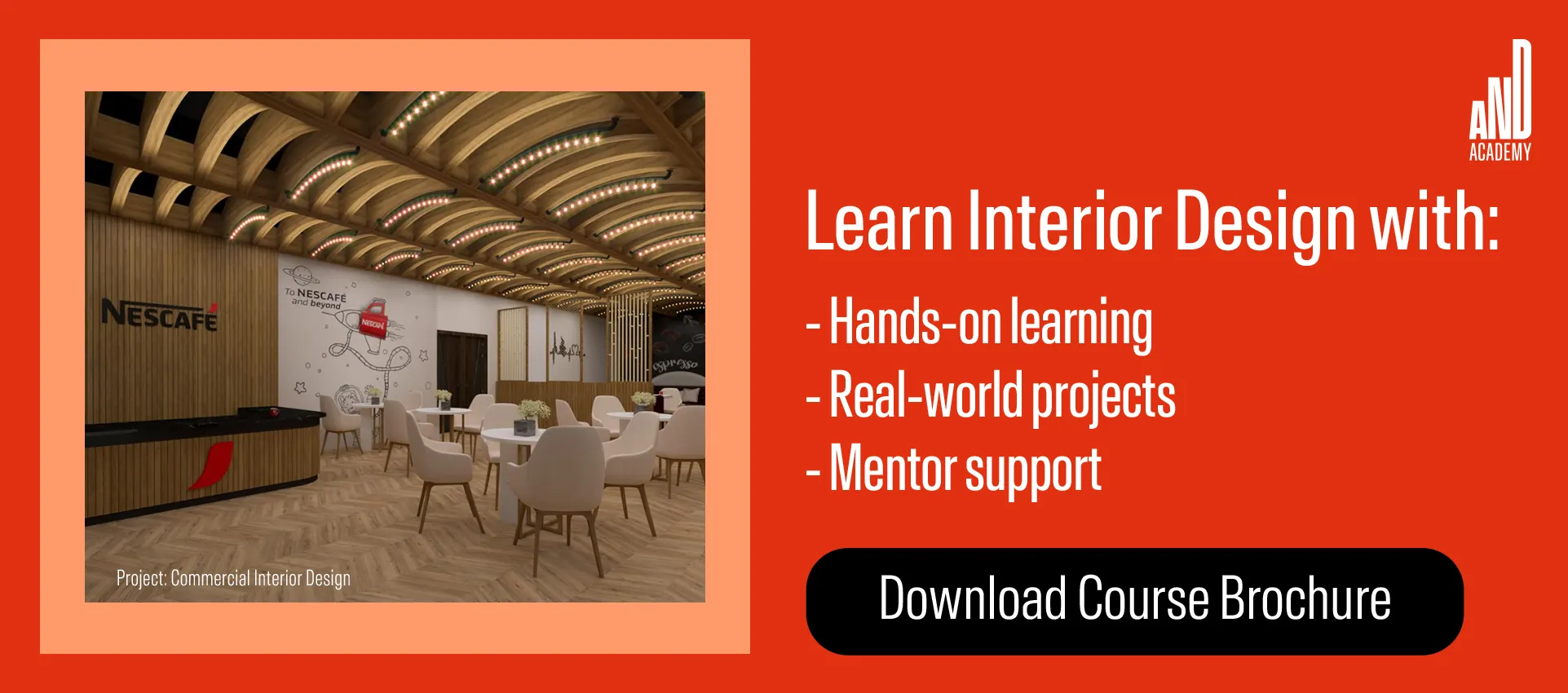
Things to avoid for a Vastu-compliant home
When implementing Vastu, there are certain elements that you should avoid at all costs. They include:
1. Cluttered entrance
Blocked entrances hinder the flow of energy, so keep your entrance clean and free of clutter to invite positivity into the space. Cluttered environments can contribute to an increase in stress levels and impact your health in the long run.
2. Overhead beams
Sitting or sleeping beneath exposed beams can create stress and should be avoided. Research indicates that overhead beams can reduce perceived comfort levels.
3. Sharp corners
Sharp corners, particularly in living areas, should be avoided as they can create unnecessary tension and disturb the harmony of the space. Rounded edges, on the other hand, are safer and contribute to a more calming environment.
4. Inappropriate placement of the mirror
Mirrors positioned opposite the bed or entrance can reflect negative energy, causing restlessness. Correct mirror placement, however, has been shown to improve sleep quality.
5. Inaccurate staircase placement
Staircases located in the northeast or center of the home can obstruct the flow of energy. Poorly positioned staircases can also reduce the flow of natural light, which may not be the best thing for your house.
Successful examples of Vastu-compliant homes in India
Here are a few excellent examples that you should go through before applying Vastu in your home or next project:
1. A Dadar home that combines Tamil heritage with Vastu principles
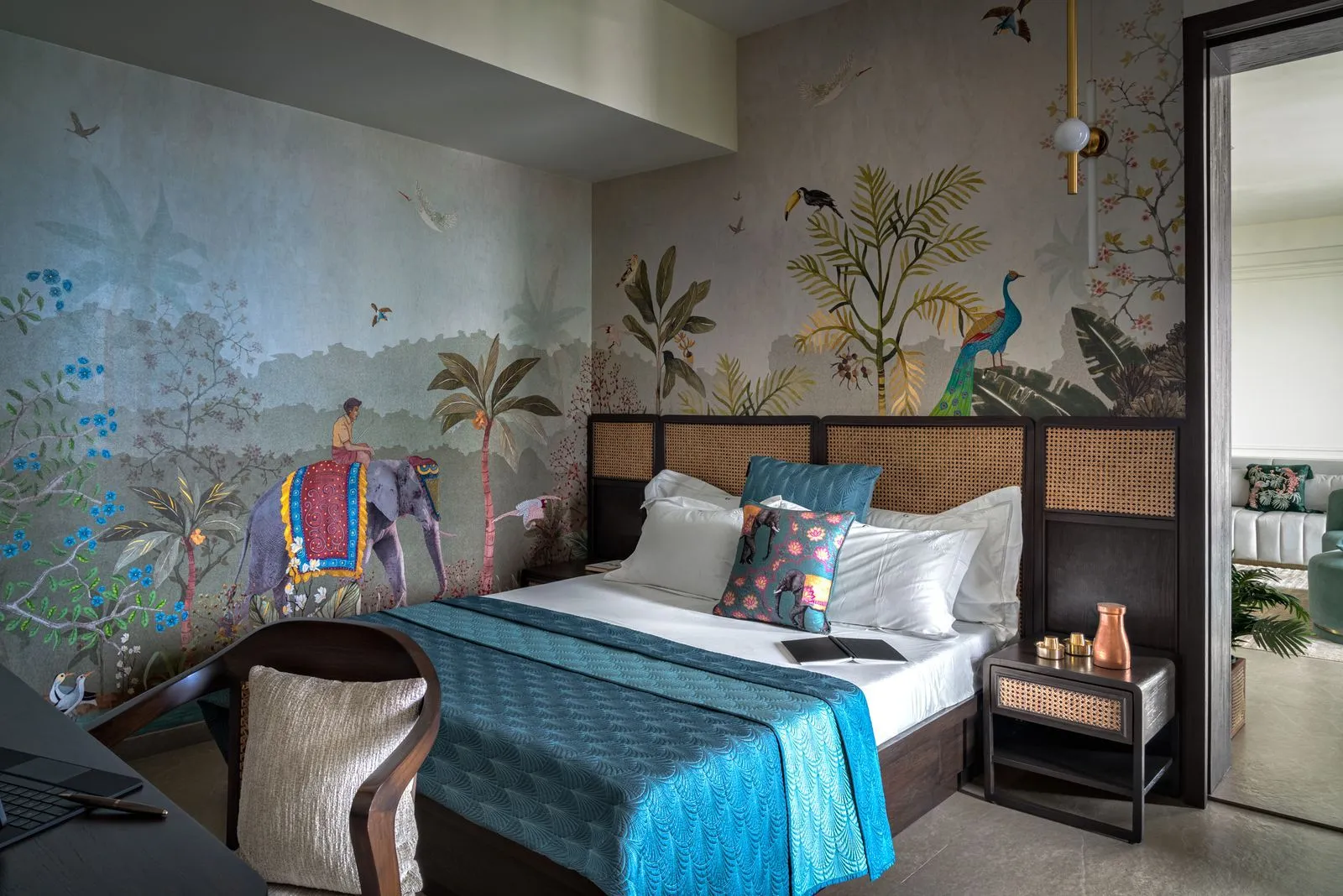
Image Courtesy: Architectural Digest
Preethi and G Sankaran’s home in Dadar, designed by Kunal Barve, is a compelling example of how Vastu principles can be combined with traditional Indian aesthetics to honor the owner’s Tamil heritage. With its thoughtful layout and placement of artefacts, it maintains a smooth flow of energy, preventing any congestion. There is a sense of openness and positive feeling with plenty of natural light.
The Chettinad mosaic floor tiles, intricate wooden columns, and teakwood reflect the love for regional craftsmanship while also aligning with Vastu’s preference for natural materials. The ornate woodwork, carved columns, and classic wainscoting portray symmetry and balance, accomplishing a rare harmony that is culturally grounded yet so effortlessly stylish.
2. A traditional bungalow for a joint family in Vadodara
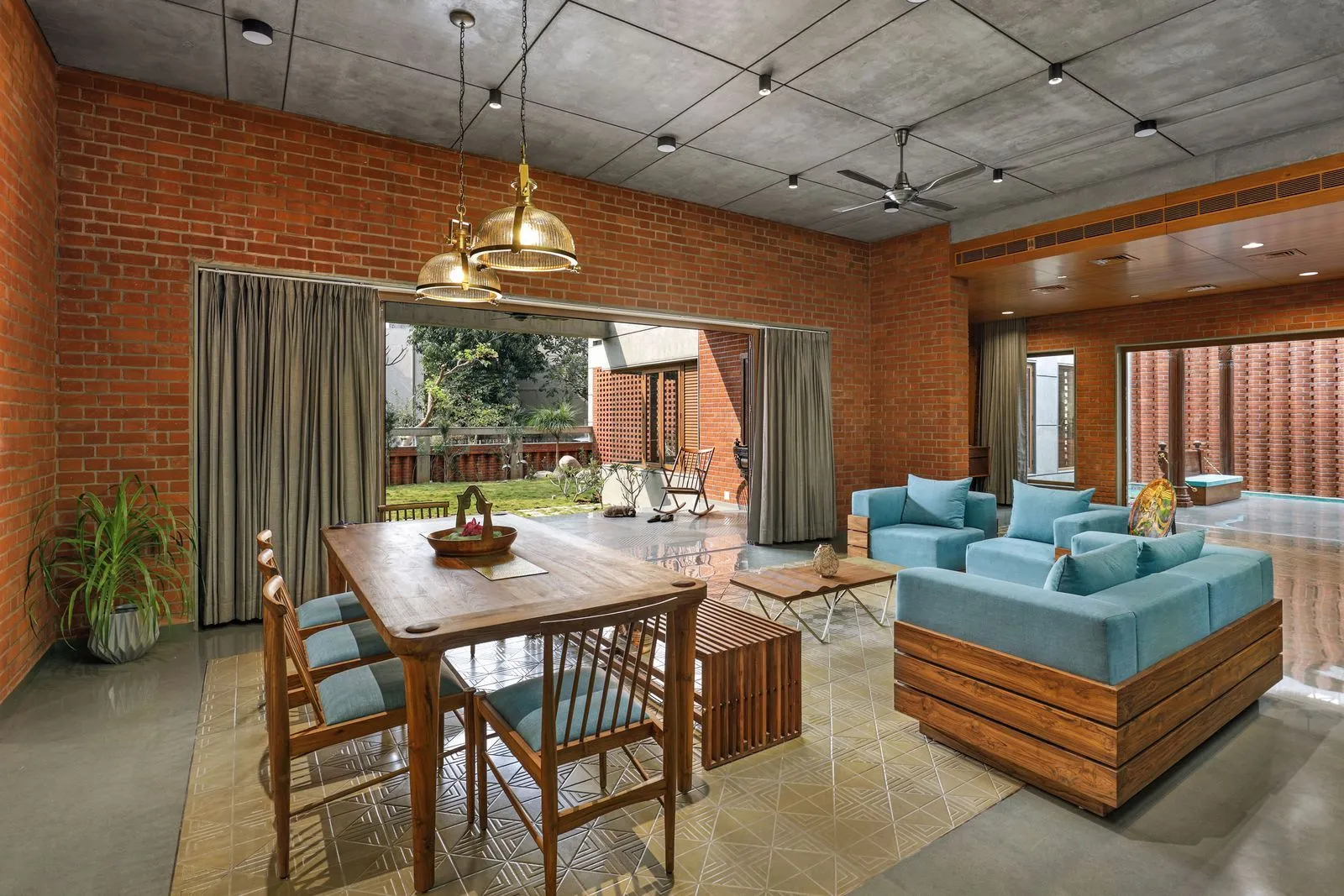
Image Courtesy: Architectural Digest
Recognizing this multi-generational family’s age-old tradition of performing rituals upon entering and leaving the house, the design positions the entrance and pooja area in auspicious directions. Designed by Narendra Joshi of K.N. Associates, the layout is planned as per Vastu to accommodate three generations with unhindered views of the garden from both sides of the living room.
Wooden columns, brackets, and arches from old structures were intentionally repurposed as jharokhas (overhanging balconies), honoring the use of natural materials and holding on to traditional values. Patterned Kota stone, along with green and yellow Kota stone in a leather finish, is laid on the floor across various parts of the home. Sculptures and installations created by local artists and craftsmen were incorporated into the design. The detailed carvings of the salvaged woodwork contrast with the clean lines of the architecture, achieving the Vastu principle of balance.
3. An amalgamation of Chettinad, British colonial, and Dravidian-temple architecture in a Coimbatore home
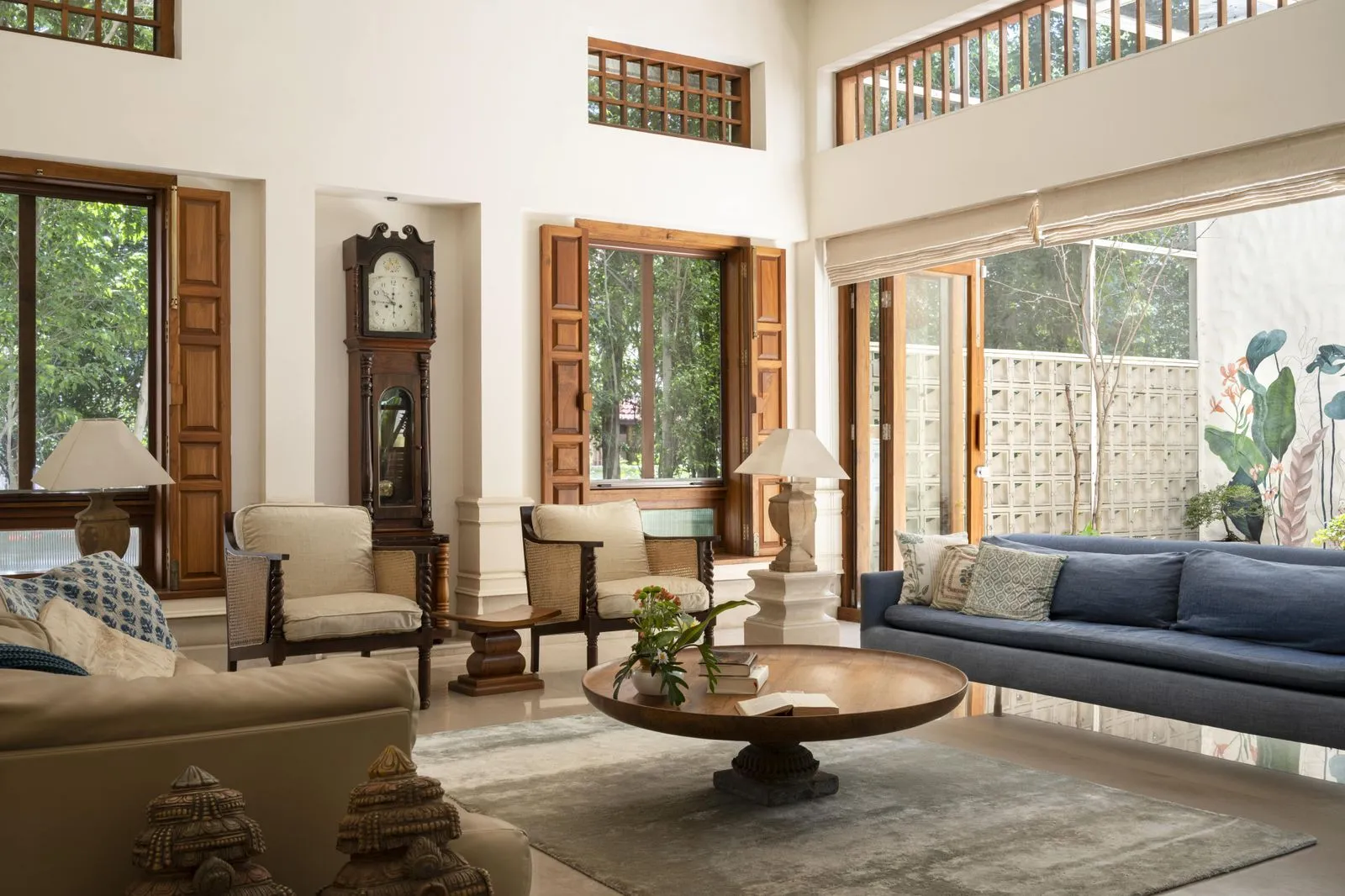
Image Courtesy: Architectural Digest
For architect Sowmya Kumar, founder of OWM Architecture, designing her own home in Coimbatore was an act of infusing Vastu principles into the architectural references of her childhood. Drawing inspiration from her ancestral house in Kongu, Tamil Nadu, family vacations to the Nilgiris, and Dravidian temple architecture, the residence features Chettinad influences through the kolam marble inlay at the entrance and traditional columns, alongside British colonial details such as an English grandfather clock and classic wainscoting. A mythological painting symbolising Dravidian temple architecture can also be spotted.
Despite the challenge of accommodating four bedrooms, an AV room, and a spa within the modest footprint, Kumar’s elimination of corridors and ante-spaces ensures that every part is Vastu-compliant and generously proportioned. Sustainable materials like mud plaster, sandstone, and Kota stone help maintain an ambient temperature, whereas high ceilings, a courtyard, clerestory windows, and a thick western wall provide natural ventilation. This Coimbatore home is where regional identity, sustainability, and Vastu coexist in equal measures.
4. A Vastu-compliant brick home in Vadodara

Image Courtesy: Architectural Digest
Urvi Shah of Traanspace has composed a home in Vadodara that reimagines Vastu compliance through the lens of modern minimalism and spatial connections. Rather than simply orienting rooms to auspicious directions, Shah’s vision begins with the very geometry of the site — a perfect square, reflected in the bungalow’s square layout and the arrangement of square rooms within. This adherence to the ancient nine-square grid honors Vastu principles and, at the same time, sets a home where every corner feels intentional and balanced.
Shah describes the design as “based on the concept of connections”— between the interior and the landscape, between one space and another, and across different volumes and levels. A generous courtyard draws in natural light while visually connecting the living spaces. Expansive windows and a dramatic circular cut-out in the facade, spanning two floors, invite the outdoors in. Six-foot-wide concrete overhangs shade the large windows, ensuring the interiors remain cool and energy-efficient even as sunlight floods the rooms. The pared-down material palette (exposed bricks, concrete, and solid wood) amplifies the tactile experience of the home. In this Vadodara bungalow, Vastu is not just a checklist but a living, breathing philosophy.
Conclusion
We hope that this article has been able to clear some, if not all, of your doubts about Vastu Shastra. If you are looking to improve the energy of your home and don’t know where to start, consider giving Vastu Shastra a chance. Its influence can bring about a fundamental change in the way you feel within your home.
If you’d like to learn more about other interior design styles and related topics, head back over to the AND Academy blog for more articles like this one. As a starting point, you can refer to the following resources:
1. Interior Design For Small Living Rooms: Complete Guide (With 25 Ideas)
2. A Comprehensive Guide to Modern Interior Design (With Ideas)
3. 33 Luxury Interior Design Tips to Revamp Your Home in 2024
Next Steps
In case you need further assistance, here are some resources to consider:
- Watch this session by Snehanshu Mukherjee, Founding Partner at T.E.A.M and Mansi Almadi, an Interior Designer at Studio Lotus
- Talk to a course advisor to discuss how you can transform your career with one of our courses.
- Check out our Interior Design courses – all courses are taught through live, interactive classes by industry experts.
- Take advantage of our scholarship and funding options to overcome any financial hurdle on the path of your career transformation.
Note: All information and/or data from external sources is believed to be accurate as of the date of publication.

